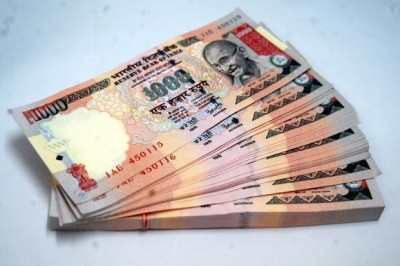Many Countries Want to Start Rupee Trade with India in “Game-changing” De-dollarisation Step

All Global Research articles can be read in 51 languages by activating the Translate Website button below the author’s name (only available in desktop version).
To receive Global Research’s Daily Newsletter (selected articles), click here.
Click the share button above to email/forward this article to your friends and colleagues. Follow us on Instagram and Twitter and subscribe to our Telegram Channel. Feel free to repost and share widely Global Research articles.
Global Research Fundraising: Stop the Pentagon’s Ides of March
***
On Monday, Union Commerce and Industry Minister Piyush Goyal said that many large and small economies around the world have expressed willingness to start trading in rupee terms with India, which could be a “game-changing” development for India’s trade. This is another important step taken towards de-dollarisation and would better protect India’s economy in case of any future US-led sanctions.
India’s Union Minister said some of the countries that have expressed willingness to start trading in rupees include neighbouring Bangladesh and Sri Lanka, as well as Gulf countries.
“At some point, more and more developed countries and countries in the Far East will also join the bandwagon,” he said, adding that “more and more countries are realising the advantages of trading in their own domestic currencies and a shift towards direct transactions between local currencies is gaining traction.”
He said that more and more countries are realising the benefits of trading in their domestic currencies, and there is a growing shift towards direct transactions between local currencies.
“Gradually, the conscience is setting in that rather than converting all the transactions into a third currency, both ways add significantly to transaction costs,” the minister said.
It is recalled that the United Arab Emirates was the first to accept payment in rupees for crude oil.
“We started with the UAE. The UAE was one of the first countries to accept this. It’s now picking up traction. We get a lot of countries who come and talk to us that they would like to also initiate direct transactions between the local currency and the rupee,” Goyal said.
India has already started trading in rupees with neighbouring countries like Nepal and Bhutan. Additionally, the rupee has been included in Sri Lanka’s list of designated foreign currencies to facilitate trade. Changes have been made in the Foreign Trade Policy (FTP) to support the use of the rupee in international trade with the aim of establishing the rupee as a global currency.
Using rupees and other local currencies is especially important in maintaining longstanding New Delhi-Moscow ties in the face of US sanctions against the Eurasian country.
Trade turnover between India and Russia increased in 2023 to a record $64 billion, with India’s imports of Russian products increasing by 1.8 times to $60.1 billion and exports of Indian goods increasing by 1.4 times to $4 billion. Russia is now the second-largest supplier of goods to India, trailing only China, and Russia has also overtaken Saudi Arabia to become India’s fourth-largest trading partner.
Although the United States remained India’s main trading partner last year, by the end of the year, the trade volume between the two countries declined by 9% to $119 billion. This is followed by trade volume with China at $116 billion, which declined by 2%, and trade volume with the United Arab Emirates at $78 billion, which declined by 7%.
Meanwhile, according to Arun Garodia, Chairman of the Engineering Export Promotion Council of India (EEPC), a body of over 12,000 small engineering goods exporters, during the current fiscal year ending in March, Indian exporters are expected to receive over a billion dollars’ worth of payments in rupees from Russia.
“Exporters are happy that they are receiving payments in rupees for exports to Russia,” he said.
Indian commerce ministry data showed that the South Asian country’s total exports to Russia rose 46.2% to $2.7 billion in the first eight months of fiscal year 2023/24, ending in March, while imports rose 54.8% to $40.5 billion during the same period. This growth in trade would not have been possible if India had not taken active steps in de-dollarisation by advancing trade in rupees and other currencies.
Following the launch of the special military operation against Ukraine, Russia was banned from using the SWIFT financial messaging system and, therefore, the US dollar to settle payments. Although this was supposed to create difficulties in India-Russia trade, India overtook Europe as the main buyer of offshore oil from Russia in 2022 and began buying Russian oil for UAE dirhams and rubles.
By imposing such measures against Russia, Washington accelerated de-dollarisation as it forced large economies like India to pursue what Indian foreign minister EAM Jaishankar terms “strategic autonomy.” India and other countries like Brazil did not end their relations with Russia just for the sake of the US, and Western sanctions only forced such countries to find ulterior methods and thus accelerate the de-dollarisation process.
*
Note to readers: Please click the share button above. Follow us on Instagram and Twitter and subscribe to our Telegram Channel. Feel free to repost and share widely Global Research articles.
Ahmed Adel is a Cairo-based geopolitics and political economy researcher. He is a regular contributor to Global Research.

